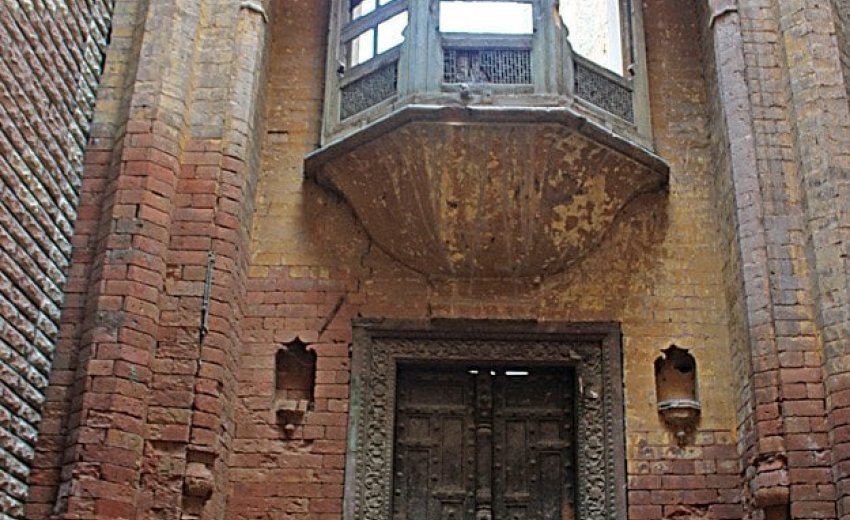In Peshawar, Mohallah Jogan Shah is a really old place where Sikhs have lived for a long time.
In Peshawar, Mohallah Jogan Shah is a really old place where Sikhs have lived for a long time. It's near Dabgari. There's a historic gurdwara there and a school for the community. Even though big buildings are all around, people still value these old places.
50-year old Pardeep Singh, a Sikh resident said, “There are some 6,000 Sikhs that live in the mohallah. This is the area where our ancestors lived and we have maintained our culture, traditions and our own educational system,”
Pardeep added that both Bhai Joga Singh Khalsa Dharmic School and Guru Angat Dev Jee Khalsa Dharmic School focus on teaching both religious as well as secular education, with a special emphasis on Sikh traditions and teachings.
Gurdwara Jogan Shah
In the middle of Peshawar lies a historical gem, the Gurdwara Jogan Shah. This centuries-old Sikh temple stands tall amidst the bustling streets, surrounded by gates that enclose the area like a protective shield. The temple, a magnificent example of Sikh architecture, is adorned with intricate mirror work and spans three floors. Local residents visit twice daily for sangat, a gathering to recite verses from the Guru Granth Sahib. However, due to safety concerns, an additional wall has been erected around the temple, with vigilant police officers stationed nearby to ensure its protection around the clock.
In the bustling city of Peshawar, nestled amidst its rich history, stands a revered place of worship - the gurdwara dedicated to Bhai Joga Singh. A local elder, Ameer Singh, fondly reminisces about the significance of this sacred site. "Our gurdwara pays homage to Bhai Joga Singh, esteemed not only by Sikhs but also by Pukhtuns," he shares. Once, a vibrant fair graced the surroundings of the gurdwara annually. However, due to the city's security concerns, this tradition has ceased, leaving behind a sense of longing for the bygone festivities.
In his book, "Peshawar: City on the Frontier," SM Jaffar sheds light on the gurdwara's history, tracing its origins to the dharamshala of Joga Shah, a revered Hindu fakir. Jaffar lauds it as one of Peshawar's well-maintained Sikh institutions, capable of hosting up to two thousand individuals simultaneously.
Beyond the historical accounts, local folklore intertwines with the legacy of Bhai Joga Singh. It is believed that a spring, bearing his name, once flowed through the vicinity. This spring, regrettably no longer present, was renowned across the Peshawar Valley for its purported healing properties, attracting pilgrims from distant lands.
During the Sikh reign over the city from 1823 to 1848, Peshawar witnessed the construction of numerous impressive buildings. Some, such as the Gurdwara Jogan Shah, remain in good condition today. However, many others have fallen into ruins. The Sikhs of Peshawar strive to preserve their heritage, yet once an old building collapses, restoring it to its original glory becomes nearly impossible.
*Based on an article by Hidayat Khan, published in The Tribune on 29th April 2014

